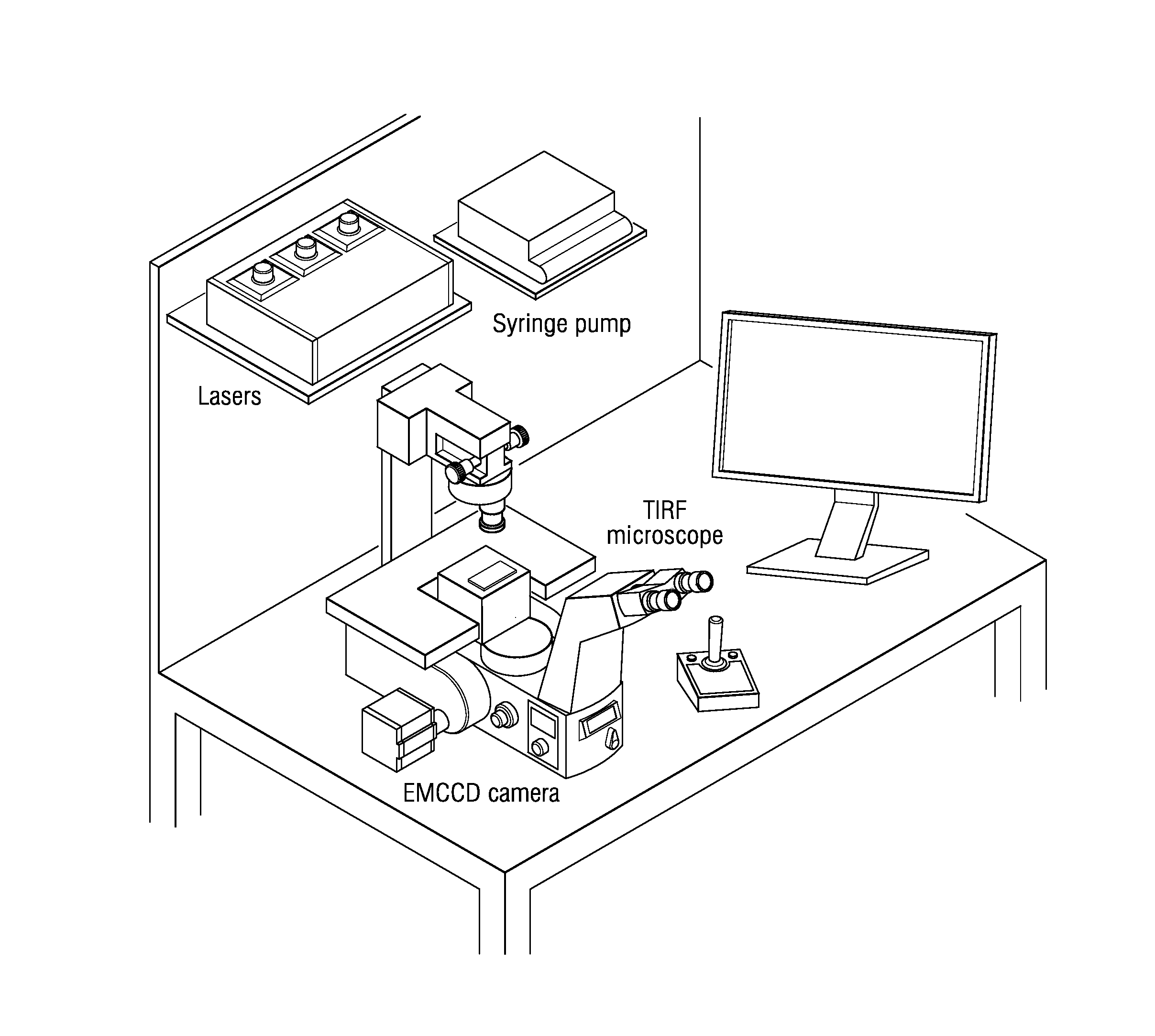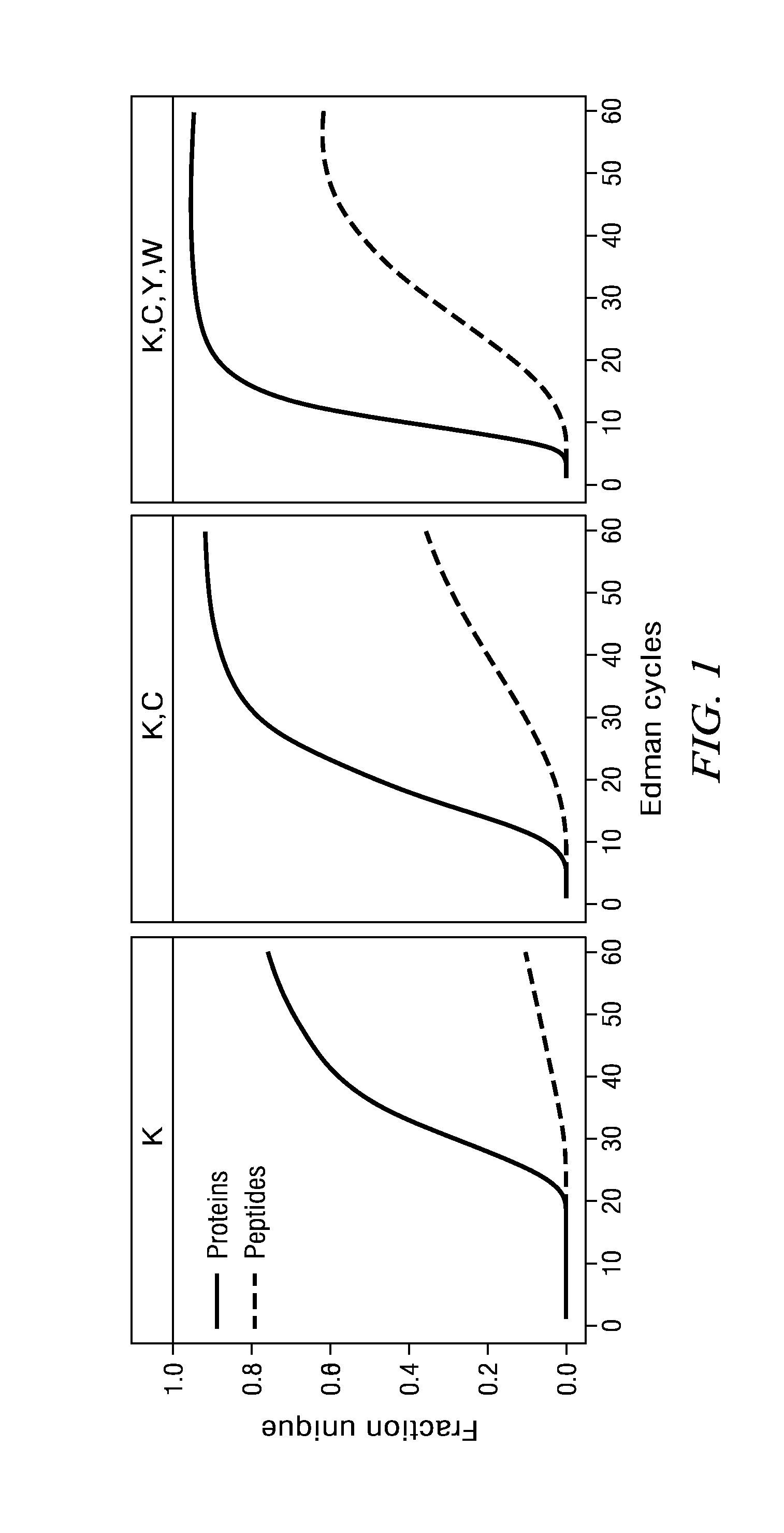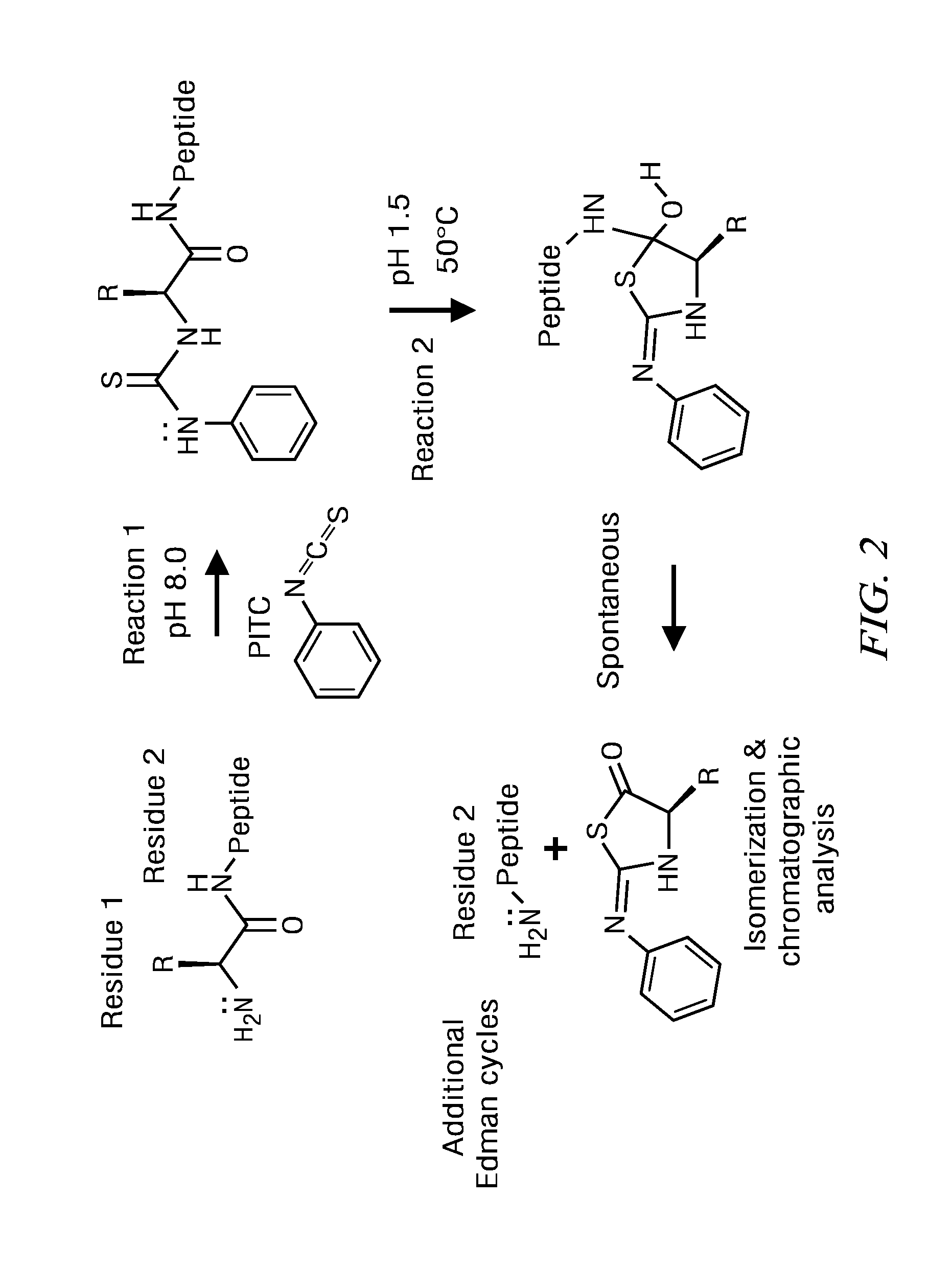Peptide identification and sequencing by single-molecule detection of peptides undergoing degradation
a single-molecule detection and peptide technology, applied in the field of peptide identification and sequencing methods, can solve the problems of accelerating the fundamental speed limit of ms analysis, affecting the accuracy of ms polypeptide sequencing, so as to achieve rapid high-throughput identification
- Summary
- Abstract
- Description
- Claims
- Application Information
AI Technical Summary
Benefits of technology
Problems solved by technology
Method used
Image
Examples
example i
Simultaneously Detecting Amino Acid Positions in a Plurality of Peptides
[0142]This example presents the simultaneous detection of the amino acid positions of 1,000 peptides using SMD following exposure to 30 cycles of Edman sequencing chemistry. Further demonstrated is an ability to identify and distinguish between single peptide molecules that contain between 1 and 5 fluorophores. Our expectation is that this is achievable using standard intensity-based algorithms for determining fluorophore numbers.
example ii
Simultaneously Tracking Amino Acid Positions in a Plurality of Peptides
[0143]This example presents the simultaneous tracking of the amino acid positions of 1,000 peptides using SMD through 30 cycles of Edman sequencing chemistry. Further demonstrated is the alignment of images from each cycle to identify the loss of fluorophores from these 1,000 peptides at specific cycles. Our expectation is that this is achievable using cross-correlation approaches to minimize X-Y distances between single molecule spots throughout cleavage cycles.
example iii
Derivatizing and Immobilizing a Plurality of Peptides
[0144]This example presents a method that enables a robust fluorophore-derivatization and immobilization of 1,000 peptides derived from a simple peptide mixture. Further demonstrated is the completion of 30 cycles of Edman sequencing and SMD detection on these 1,000 peptides and derivation of their encoded sequences. Our expectation is that this is achievable using standard attachment chemistries (e.g. NHS, maleimide) and immobilzation reagents.
PUM
 Login to View More
Login to View More Abstract
Description
Claims
Application Information
 Login to View More
Login to View More - R&D
- Intellectual Property
- Life Sciences
- Materials
- Tech Scout
- Unparalleled Data Quality
- Higher Quality Content
- 60% Fewer Hallucinations
Browse by: Latest US Patents, China's latest patents, Technical Efficacy Thesaurus, Application Domain, Technology Topic, Popular Technical Reports.
© 2025 PatSnap. All rights reserved.Legal|Privacy policy|Modern Slavery Act Transparency Statement|Sitemap|About US| Contact US: help@patsnap.com



